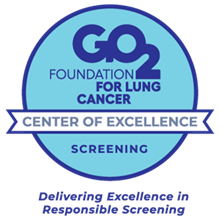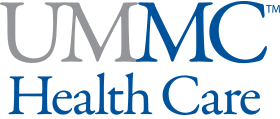Cancer Screening
- Cancer Home
- Patient-Centered Cancer Care
-
Cancer Types
- Brain and Central Nervous System Cancers
- Breast Cancers
- Gastrointestinal Cancer
- Genitourinary Cancers
- Gynecologic Cancer
- Head and Neck Cancers
- Leukemias, Lymphomas, and Myelomas
- Liver and Bile Duct Cancers
- Lung Cancers and Mesothelioma
- Melanoma and Skin Cancers
- Sarcoma (Bone and Soft Tissue Cancers)
- Cancer Screening
- Cancer Treatment Options
- Cancer Support Services
- Infusion Therapy
- Radiation Therapy
Lung Cancer Screening and Diagnosis
Lung cancer often has few symptoms in its early stages, so cancer screening is important for early detection and treatment. At UMMC, we use the latest low-dose CT scan protocols to detect pulmonary nodules. Low-dose CT scanning also picks up many benign nodules that cannot be distinguished from cancer on CT images alone.
The benefits of CT screening for lung cancer are best realized when there is an organized process for assessing these nodules, which occurs with a dedicated person or group that can make decisions about the most appropriate nodules to biopsy and the most appropriate method to obtain that biopsy. With newer technology, we are now able to biopsy smaller nodules with less risk than before using electromagnetic bronchoscopy, or ENB.
 The lung cancer screening program at UMMC has been named a Center of Excellence by the GO2 Foundation for Lung Cancer.
The lung cancer screening program at UMMC has been named a Center of Excellence by the GO2 Foundation for Lung Cancer.
Screenings we offer include:
Screening appointments and locations
The UMMC lung cancer care team offers early screenings for adults who are at a higher risk for lung cancer due to long-term smoking. The low-dose CT scan is performed at all UMMC CT imaging locations.
- Anyone can call (601) 984-LUNG (5864), Option 1, to find out if they qualify.
Low-dose computed tomography (CT) cancer screening
Sometimes called “CAT scans,” low-dose CT scans are used to see lesions, or “spots,” inside the lungs. A National Cancer Institute clinical trial has shown that early detection using low-dose CT reduced lung cancer death rates by 20 percent in high-risk populations.
You may qualify for a low-dose CT cancer screening. Call us today if you:
- Are between 50 and 80 years old
- Are someone who currently or formerly smoked cigarettes
- Smokers
- Firefighters
- People with a family history of lung cancer
- Workers who have been exposed to potentially cancer-causing materials such as asbestos, radon, nickel, or any chronic occupational dust exposure
Smoking cessation program
UMMC also supports a tobacco cessation program that can help you quit smoking. Learn more about tobacco cessation, or call The ACT Center for Tobacco Treatment, Education, and Research at (601) 815-1180.
Diagnostic tests
Further testing may be required to diagnose lung cancer or see if it has spread and how far. Ever improving technology means doctors often can detect suspicious areas as small as one-fourth inch in diameter. If imaging tests lead them to suspect a cancer, they will want a biopsy. Doctors at the UMMC Cancer Center and Research Institute will only recommend tests that provide the most information about your condition and are best suited to your health conditions and symptoms.
Bronchoscopy
A bronchoscope, a thin lighted tube, is inserted through the nose or mouth to the lung. This allows the physician to examine the lungs and passages which lead to them. The bronchoscope also lets the doctor collect samples of the cells with a needle or other tool.
Electromagnetic navigation bronchoscopy® (ENB)
This alternative to traditional bronchoscopy uses 3-D imaging, GPS-like technology, and a small, flexible catheter to examine the lungs and take tissue samples.
Benefits of ENB:
- Provides for earlier diagnosis and better treatment options than traditional methods
- Can be done as an outpatient procedure, typically in a few hours or less
- Allows physicians closer, more accurate access to deeper parts of the lung than a standard bronchoscope
- Can be performed on patients who, due to health or age, cannot undergo other examinations such as surgical biopsy
- Less invasive than surgery
- Less likely to cause complications such as collapsed lung (pneumonothorax)
With ENB technology, physicians have the ability to diagnose lung cancer earlier than surgery and traditional bronchoscopy allow.
Endobronchial ultrasound (EBUS)
This procedure uses a bronchoscopy with ultrasound, and doctors can view images as a biopsy is being taken. This enables the physician to take the biopsy from the place in the lung that looks suspicious. When possible, doctors here use this procedure to replace mediastinoscopy, which is a minor surgery.
Thoracentesis
In this ultrasound-guided procedure, a long needle is used to remove fluid from the chest, and a pathologist then examines it for cancer cells.
Fine needle aspiration
A thin hollow needle is used to remove tissue or fluid from the lungs or a nearby lymph node. Often an image of the lungs helps guide the needle to the suspicious area. This procedure is sometimes performed by radiologist by placing the needle through the chest wall or back and into the lung nodule.
Mediastinoscopy
A thin lighted tube is inserted through a small incision at the top of the breastbone. This minor surgery allows the physician to see the lungs and the space between the lungs, and also take tissue samples.
Thorascopy
In this minor surgery, some small cuts are made in the chest and back, and a thin lighted tube is inserted to examine the lungs and adjacent tissue. The tube can be used to take tissue samples, too.
Pleural biopsy
Here, a sample of the tissue which surrounds the lungs is removed. This can be done with a needle, endoscope, or surgically.
Sputum cytology
Sputum is a thick fluid that is coughed up. A pathologist looks at the fluid under a microscope to see if it contains cancer cells. This test is rarely used now.
Oximetry
A small device or clip, usually placed on the index finger, measures the amount of oxygen the blood is carrying to the body.
Pulmonary function test
This test determines how well the lungs are functioning.
Positron emission tomography (PET)
In a PET scan, a small amount of radioactive glucose (sugar) is injected into a vein, and a scanner makes detailed, digital images of where in the body the glucose is used. Because cancer cells often use more glucose than normal cells, the images can be used to find cancer cells.


